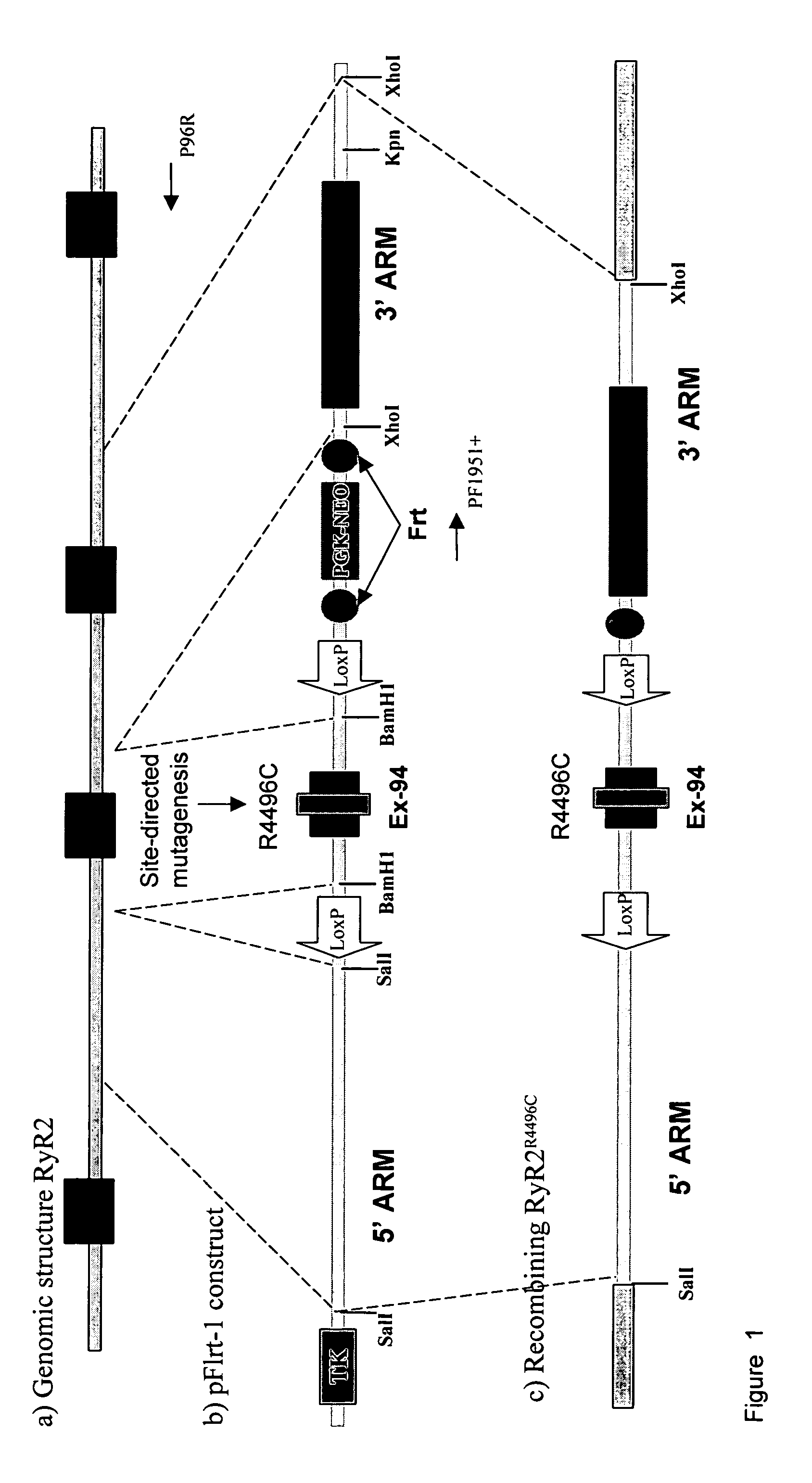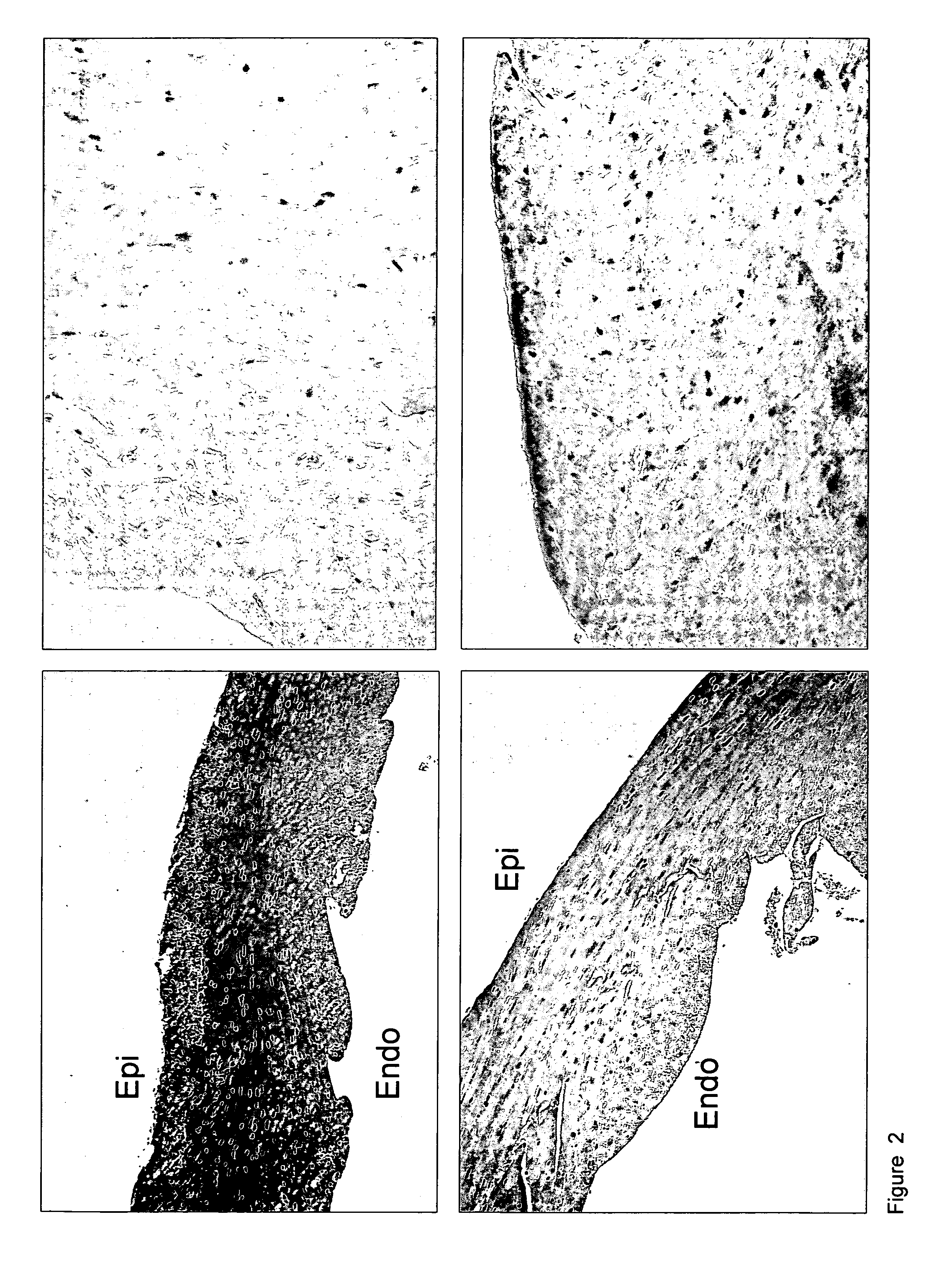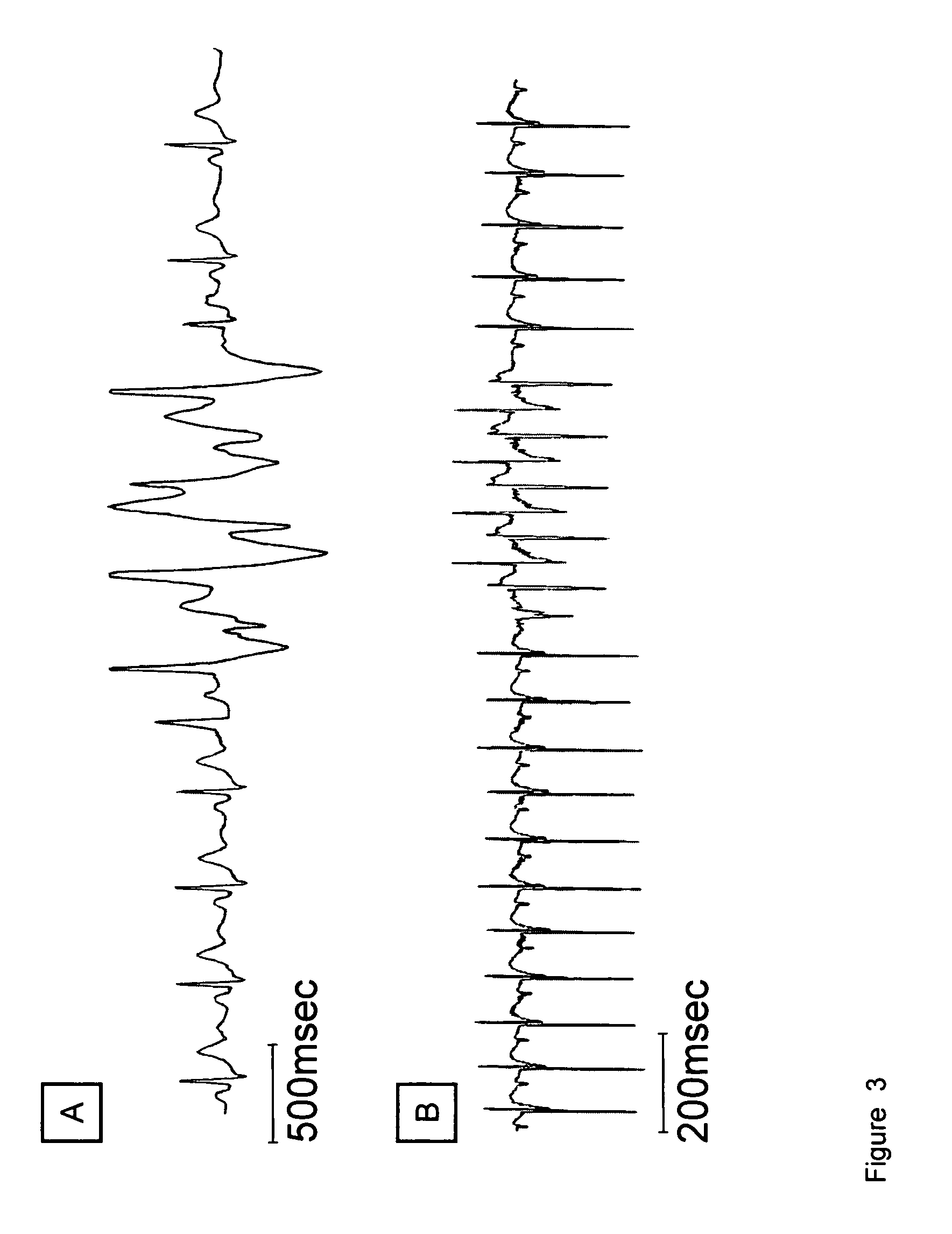Transgenic animal model for catecholaminergic polymorphic ventricular tachycardia (CPVT) and use thereof
a technology of catecholaminergic polymorphism and ventricular tachycardia, which is applied in the field of transgenic animal models for catecholaminergic polymorphic ventricular tachycardia (cpvt), can solve the problem of lack of experimental evidence linking this mutation to the development of life-threatening arrhythmias
- Summary
- Abstract
- Description
- Claims
- Application Information
AI Technical Summary
Benefits of technology
Problems solved by technology
Method used
Image
Examples
example 1
Generation of Conditional Knock-in of RyR2 in Mouse Model
[0072]We amplified by PCR a 900 bp segment encompassing exons 94 and 95 of the RyR2 gene using exonic primers identified on mouse RyR2 cDNA (GenBank Acc. N° NM—023868). This fragment was used as a probe to screen a 129SV / J lambda mouse genomic library (Stratagene): 800.000 phages were screened and two positive plaques were isolated. Through Southern blot hybridization we identified one 3850 bp fragment (BamHI) and one 3500 bp fragment (XbaI) that were cloned into pBluescript (Stratagene) and sequenced to define the genomic structure of is the mouse RyR2 gene. Site-direct mutagenesis (Quick-Change™, Stratagene) was performed to introduce the point mutation R4496C in exon 94 in the BamHI fragment.
[0073]The targeting vector pFrIt1 (Gene bank: AY268481) contained a PGK-Neo gene flanked by Frt sites used for the selection with G418 (Geneticin), a HSV-TK cassette (outside the region of homology) for the selection with gancyclovir an...
example 2
Development and Pathology of WT and RyR2+ / RyRR4496C Mice
[0075]No difference between the WT vs RyR2+ / RyRR4496C animals was present in the duration of the pregnancy, delivery, size and survival of litters, development and behaviour. Young adult mice of both genders entered the experimental protocol: no difference in the weight between WT and RyR2+ / RyRR4496C mice was observed (mean weight WT 25.6±3.6 gr; RyR2+ / RyRR4496C 27.3±4.9 gr: p=0.189).
[0076]Gross inspection did not show any macroscopic alteration of the heart and vessels. Histological examination was carried out on hearts of eight months old mice (WT n=2 and RyR2+ / RyRR4496C n=3) excised, stored in 10% formalin, serially sectioned. The sections were fixed with 10% formalin and stained with hematoxylin-eosin and / or Masson stain and analyzed with routine light microscopy. No tissue abnormalities, no fibrous-fatty infiltration was observed, no signs suggestive of right ventricular cardiomyopathy were identified in the mutant mice an...
example 3
Phenotype Characterization Under Exercise or Adrenergic Activation Testing
Measures, Statistical Analysis and Definitions.
[0077]Statistical analysis was performed using the SPSS statistical package (v. 12.01). Parametric tests were used to compare normally distributed variables (unpaired t-test and ANOVA with Bonferroni correction for multiple comparisons). Cross tabulations with chi-square or Fisher's exact test were used as appropriate for categorical variables. Data are expressed as mean±standard deviation.
[0078]Arrhythmias were defined as follows: non sustained ventricular tachycardia (VTns) was defined as a series of 4 to 10 consecutive repetitive ventricular ectopic beats (VEBs), sustained VT (VTsust) was defined as a run of >10 consecutive VEBs, ventricular fibrillation (VF) was defined as a VTsust degenerating into ventricular fibrillation leading to sudden death.
[0079]ECG radiotelemetry monitors (Data Sciences International) were implanted intraabdominally under general anae...
PUM
| Property | Measurement | Unit |
|---|---|---|
| Action potential | aaaaa | aaaaa |
| Pressure | aaaaa | aaaaa |
| Current | aaaaa | aaaaa |
Abstract
Description
Claims
Application Information
 Login to View More
Login to View More - R&D
- Intellectual Property
- Life Sciences
- Materials
- Tech Scout
- Unparalleled Data Quality
- Higher Quality Content
- 60% Fewer Hallucinations
Browse by: Latest US Patents, China's latest patents, Technical Efficacy Thesaurus, Application Domain, Technology Topic, Popular Technical Reports.
© 2025 PatSnap. All rights reserved.Legal|Privacy policy|Modern Slavery Act Transparency Statement|Sitemap|About US| Contact US: help@patsnap.com



